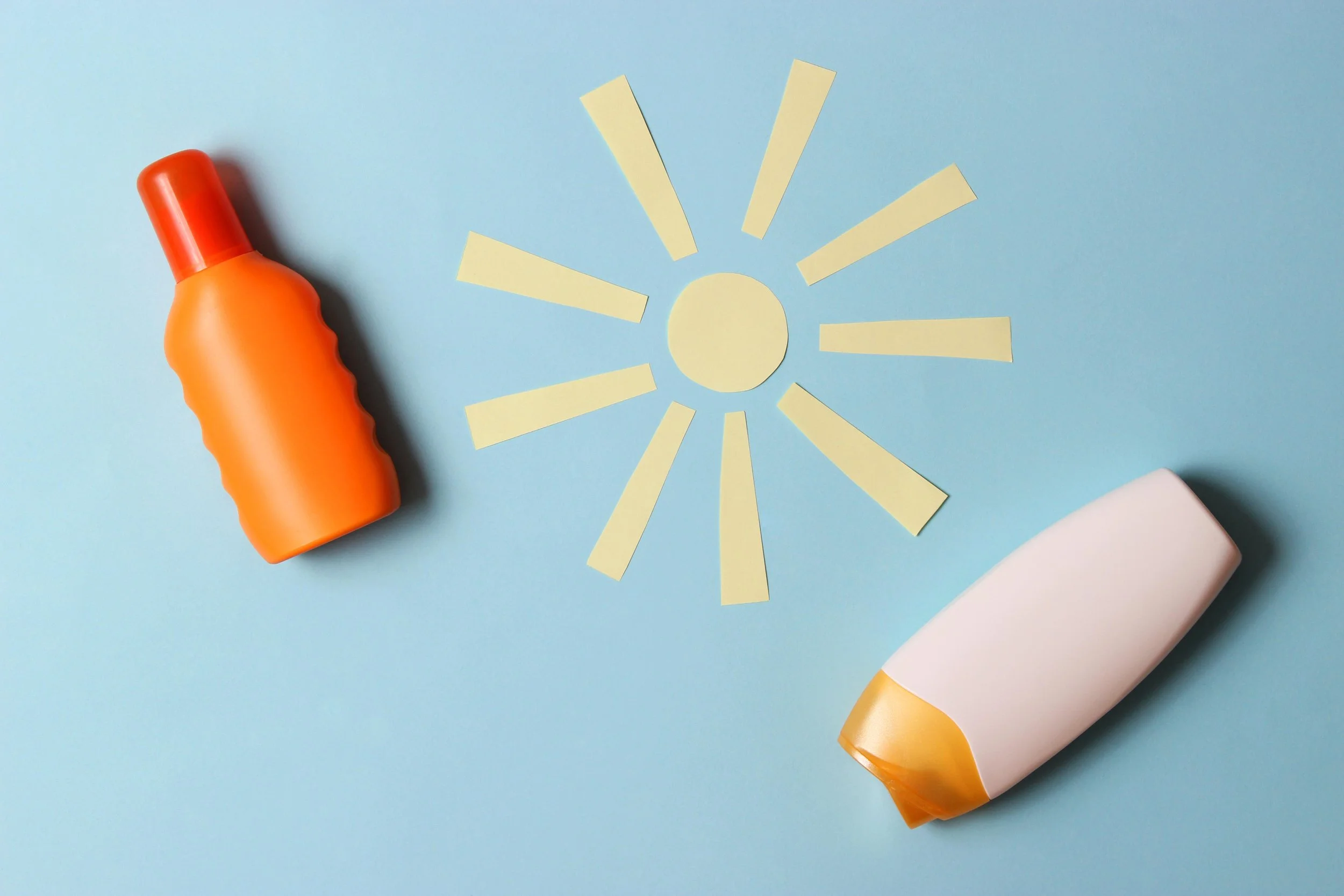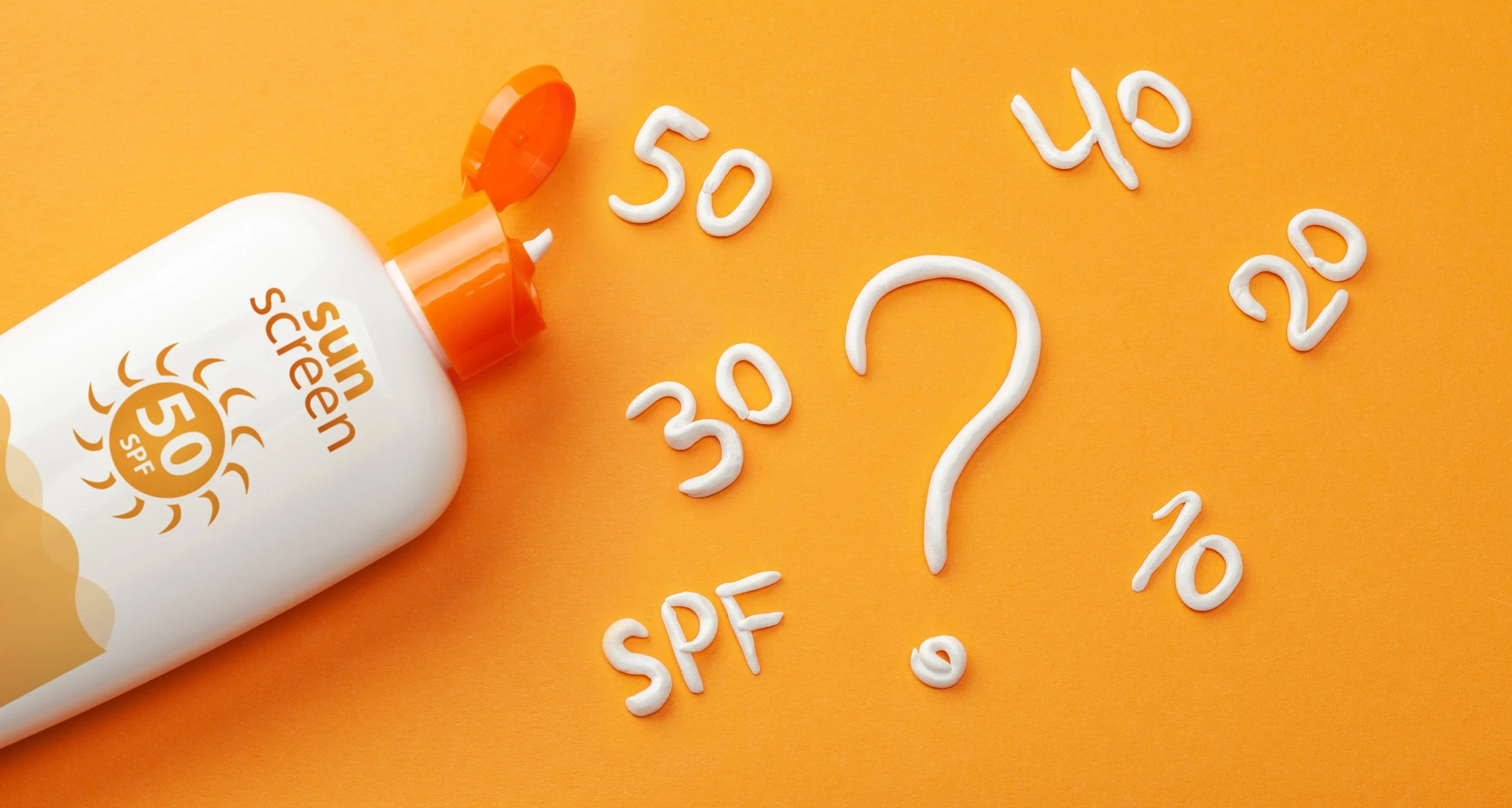The Best Sunscreens for Every Skin Type (Backed by Science)
Disclosure: This post contains affiliate links. As an Amazon Associate, I earn from qualifying purchases—at no extra cost to you. I only recommend products I truly believe in.
We all know sunscreen is the Beyoncé of skincare—iconic, essential, and a non-negotiable headliner. But with thousands of SPFs on the market, finding your perfect sunscreen can feel like dating: confusing, exhausting, and full of flakes (literally). And let’s be honest, the wrong one can break you out, dry you out, or leave you looking like a glazed donut—but not in the cute Hailey Bieber way.
The good news? Science has our back. Whether you’re oily, dry, sensitive, or somewhere in between, there’s a sunscreen that’ll protect your glow and work with your skin, not against it. Let’s break it down, skin type by skin type, with research-backed picks and no fluff.
☀️ Why Sunscreen Matters (More Than You Think)
Before we get into the product recs, let’s talk science.
Sunscreen isn’t just about preventing sunburn—it’s about:
Protecting collagen (UV rays break it down → wrinkles)
Preventing hyperpigmentation (like melasma and post-acne marks)
Reducing skin cancer risk
Limiting inflammation that can worsen acne and rosacea
UV exposure accounts for up to 80% of visible facial aging. Daily sunscreen = fewer fine lines, more even tone, and fewer regrets .
And yes, even when it’s cloudy. Even when you’re inside near windows. Even in winter. #NoDaysOff
💦 Best Sunscreens for Oily Skin
The struggle: Greasy finishes, clogged pores, midday shine
What to look for: Oil-free formulas, gel or fluid textures, mattifying ingredients (like silica), and non-comedogenic labels
🔬 Science Says:
Lightweight gel sunscreens reduce sebum-induced barrier disruption
Zinc oxide and niacinamide may help regulate oil and reduce breakouts
💡Top Picks:
-
🧴 EltaMD UV Clear Broad-Spectrum SPF 46
💧 Lightweight, oil-free, with niacinamide to calm and balance skin.
👉 Check price on Amazon -
🧴 La Roche-Posay Anthelios Clear Skin Dry Touch SPF 60
💧 Mattifying finish with silica + perlite to absorb oil.
👉 Check price on Amazon -
🧴 Supergoop! Unseen Sunscreen SPF 40
💧 Primer-like texture, totally invisible, great under makeup.
👉 Check price on Amazon
🧴 Best Sunscreens for Dry Skin
The struggle: Flaky patches, tightness, sunscreen clinging to texture
What to look for: Hydrating ingredients like glycerin, hyaluronic acid, ceramides; creamy textures; chemical filters that don’t dry out skin
🔬 Science Says:
Dry skin = impaired barrier; moisturizing sunscreens help restore it
Occlusives like dimethicone reduce transepidermal water loss
💡Top Picks:
-
🧴 CeraVe Hydrating Mineral Sunscreen SPF 50
💧 Ceramides and hyaluronic acid restore barrier and hydrate.
👉 Check price on Amazon -
🧴 Eucerin Daily Hydration SPF 30
💧 Simple, fragrance-free, and moisturizing enough to skip a separate layer.
👉 Check price on Amazon -
🧴 Paula’s Choice Essential Glow SPF 30
💧 Subtle tint, dewy finish, with antioxidants and licorice root extract.
👉 Check price on Amazon
😬 Best Sunscreens for Sensitive Skin
The struggle: Burning, stinging, redness, rashy reactions
What to look for: Mineral filters (zinc, titanium), fragrance-free, alcohol-free, essential oil–free
🔬 Science Says:
Chemical filters (like avobenzone, oxybenzone) are common irritants
Zinc oxide has anti-inflammatory and calming properties
💡Top Picks:
-
🧴 Blue Lizard Sensitive Mineral SPF 50
💧 Zinc and titanium only, no fragrance, derm-developed.
👉 Check price on Amazon -
🧴 Neutrogena Sensitive Skin Face SPF 30
💧 Hypoallergenic and ultra-gentle.
👉 Check price on Amazon -
🧴 Vanicream Sunscreen SPF 50+
💧 Gentle, minimalist SPF for sensitive skin.
👉 Check price on Amazon
🔥 Best Sunscreens for Acne-Prone Skin
The struggle: Breakouts, congestion, greasy finishes
What to look for: Non-comedogenic, lightweight, anti-inflammatory ingredients like niacinamide and zinc
🔬 Science Says:
Certain sunscreens reduce inflammation and even help clear acne
Avoid heavy occlusives and comedogenic oils
💡Top Picks:
-
🧴 EltaMD UV Clear (yes, again!)
💧 The MVP for breakout-prone skin.
👉 Check price on Amazon -
🧴 La Roche-Posay Anthelios Mineral SPF 40 Tinted
💧 Mattifies + neutralizes redness.
👉 Check price on Amazon -
🧴 Hero Force Shield Superlight SPF 30
💧 Zinc-based with a green tint to counter inflammation.
👉 Check price on Amazon
🌀 Best Sunscreens for Combination Skin
The struggle: Oily T-zone, dry cheeks, overall confusion
What to look for: Balanced hydration, non-greasy finish, hybrid filters or gel-cream textures
💡Top Picks:
-
🧴 Isntree Hyaluronic Acid Daily Sun Gel SPF 30
💧 Lightweight gel with deep hydration.
👉 Check price on Amazon -
🧴 Supergoop! Glowscreen SPF 40
💧 Dewy finish and a primer vibe for combo skin leaning dry.
👉 Check price on Amazon
⚖️ Chemical vs. Mineral Sunscreen
Mineral (Physical)
Best for: Sensitive, acne-prone, pregnant
Notes: Zinc or titanium; sit on skin’s surface; may leave a white cast
Chemical
Best for: Dry/combo skin; makeup wearers
Notes: Absorb UV rays; more cosmetically elegant; needs 15–20 min to activate
Both work. Choose based on your skin’s needs, not fear-mongering. Mineral is ideal if you use retinoids or acids. Chemical may feel lighter and blend better on deeper skin tones.
🧴 How to Actually Use Sunscreen
Sunscreen only works if you use enough of it. Here’s how:
Apply ¼ teaspoon for your face (2 finger lengths)
Apply 15–20 minutes before sun exposure
Reapply every 2 hours—yes, even over makeup (try setting spray or powder SPFs)
Don’t forget ears, neck, hands, eyelids, lips
Layer sunscreen as the last step of skincare, before makeup. Let it set for a minute or two to avoid pilling.
💄 How to Reapply Sunscreen Over Makeup (Without Wrecking Your Face)
Let’s be real—no one wants to redo their whole beat every two hours. The good news? You don’t have to. Reapplying SPF over makeup is totally doable without looking cakey, crusty, or like you're in a losing battle with your setting powder.
☁️ 1. Use a Sunscreen Mist
Spray sunscreens are your lazy-girl best friend. Just hold it 6–8 inches away, close your eyes, and mist away. Look for non-greasy formulas that won’t disrupt makeup.
💡Top Picks:
-
🧴 Supergoop! (Re)Setting Refreshing Mist SPF 40
💧 Mattifying and makeup-friendly.
👉 Check price on Amazon -
🧴 Coola Makeup Setting Spray SPF 30
💧 Doubles as a setting spray + reapplication hero.
👉 Check price on Amazon
🖌️ 2. Try a Powder SPF
Powder formulas make it easy to touch up on-the-go and absorb oil while you're at it. Just brush it on like finishing powder—no blending required.
💡Top Picks:
-
🧴 Colorescience Sunforgettable Total Protection Brush-On SPF 50
💧 Mineral, tinted, and refillable.
👉 Check price on Amazon -
🧴 ISDIN Mineral Brush SPF 50
💧 Dermatologist favorite, great for sensitive skin.
👉 Check price on Amazon
🧽 3. Use a Cushion Compact or Beauty Sponge
Some people prefer patting on a thin layer of liquid or cream sunscreen using a clean sponge. It works well if you're indoors and need a precision refresh—just dab, don’t rub.
Tip: Use a non-greasy chemical sunscreen that layers well (like Beauty of Joseon or Isntree) and press gently into skin to avoid disturbing your base.
❓ FAQ
Q: Can I use body sunscreen on my face?
A: In a pinch, yes—but body formulas are often heavier, pore-clogging, or fragranced. For daily use, stick to face-specific options.
Q: Do I really need sunscreen indoors?
A: If you’re near windows or on screens all day—yes. UVA rays and blue light contribute to aging and pigmentation.
Q: What’s the deal with SPF 100?
A: Higher SPFs give marginally more UVB protection, but not double. SPF 50 blocks ~98%, SPF 100 ~99%. More important: reapplication.
Q: Can I layer two sunscreens?
A: Totally. Layering a mineral SPF under makeup and using a chemical spray or cushion on top can work well—just avoid friction while blending.
❌ 3 Common Sunscreen Myths (Debunked)
“I don’t need sunscreen because I have melanin.”
Melanin provides some natural protection, but not enough to prevent damage or cancer. Everyone needs sunscreen.“SPF in makeup is enough.”
You’d have to apply 7x the amount of foundation most people use. Use dedicated sunscreen under makeup.“Mineral sunscreen is safer than chemical.”
Both types are safe. Choose based on irritation risk and wearability—not TikTok fear-mongering.
✨ Final Thoughts
You don’t need to test 47 sunscreens to find the one. Stick with your skin type, listen to what your skin tells you, and remember: no other product works if you skip SPF.
Sunscreen isn’t optional. It’s your skin’s daily defense, and it’s the single most important anti-aging product you’ll ever use. Choose one you’ll actually wear—and wear it every single day.
Your glow (and future self) will thank you. ☀️🧴
Want to Dig Deeper?
If discoloration and dullness are priorities, add a vitamin C serum that’s actually proven to brighten.
For lines and texture, you’ll see more change by pairing SPF with a retinoid, and this retinoid guide makes choosing simple.
If you prefer a gentler alternative on rotation, this retinol-vs-bakuchiol comparison shows what to expect.
🔬 References
Draelos, Z. D. (2005). Sebum control in acne. Journal of Investigative Dermatology Symposium Proceedings, 10(3), 230–233.
Lodén, M. (2003). Role of topical emollients and moisturizers in the treatment of dry skin barrier disorders. American Journal of Clinical Dermatology, 4(11), 771–788.
Lautenschlager, S., Wulf, H. C., & Pittelkow, M. R. (2006). The UV sunscreen debate. Clinics in Dermatology, 24(1), 62–76.
Draelos, Z. D. (2011). The effect of zinc and other mineral ingredients in barrier repair. Clinical, Cosmetic and Investigational Dermatology, 4, 135–142.
Kircik, L. H. (2016). Safety and efficacy of sunscreens in acne patients. Journal of Clinical and Aesthetic Dermatology, 9(2), 25–30.
Narayanan, D. L., Saladi, R. N., & Fox, J. L. (2010). Ultraviolet radiation and skin cancer. International Journal of Dermatology, 49(9), 978–986.
World Health Organization. (2003). Sun Protection: A Primary Teaching Resource. Geneva: WHO.



